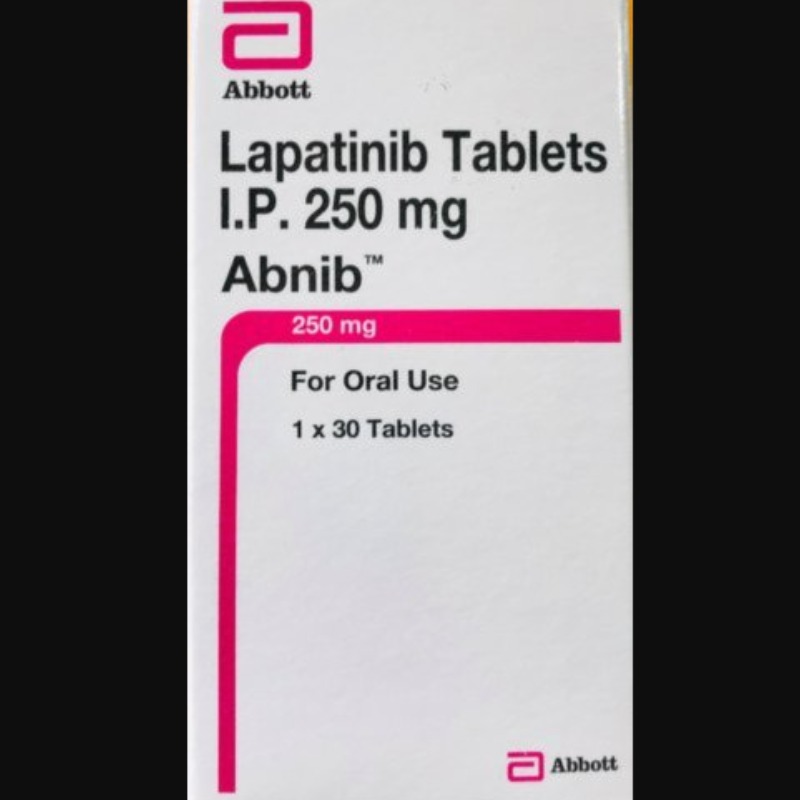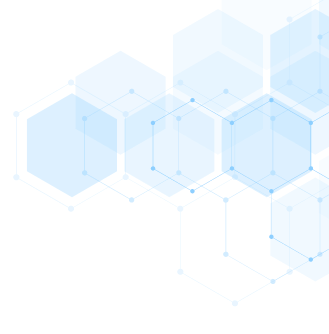DESCRIPTION
Lapatinib
CLASSIFICATION Signal transduction inhibitor
MECHANISM OF ACTION
Potent small-molecule inhibitor of the tyrosine kinases associated with epidermal growth factor receptor (ErbB1, EGFR) and HER2 (ErbB2), resulting in inhibition of ErbB phosphorylation and downstream ErbB signaling.
Inhibition of the EGFR and HER2 tyrosine kinases results in inhibition of critical mitogenic and antiapoptotic signals involved in proliferation, growth, invasion/metastasis, angiogenesis, and response to
chemotherapy and/or radiation therapy.
ABSORPTION
Oral absorption is incomplete and variable and is increased when administered with food. Peak plasma levels are achieved 4 hours after ingestion.
DISTRIBUTION
Extensive binding (99%) to plasma proteins, including albumin and α1-acid glycoprotein, and extensive tissue distribution. Steady-state drug concentrations are reached in 6 to 7 days.
INDICATIONS
FDA-approved in combination with capecitabine for patients with advanced or metastatic breast cancer whose tumors overexpress HER2 and who have
received prior therapy, including an anthracycline, a taxane, and trastuzumab.
DOSAGE RANGE
Recommended dose is 1,250 mg PO daily on days 1–21 continuously in combination with capecitabine 1,000 mg/m2 PO bid on days 1–14, with each cycle repeated every 21 days.
DRUG INTERACTION 1
Phenytoin and other drugs that stimulate the liver microsomal CYP3A4 enzymes, including carbamazepine, rifampin, phenobarbital, and St. John’s Wort.
These drugs may increase the rate of metabolism of lapatinib, resulting in its inactivation and lower effective drug levels.
DRUG INTERACTION 2
Drugs that inhibit the liver microsomal CYP3A4 enzymes, including ketoconazole, itraconazole, erythromycin, and clarithromycin. These drugs may decrease the rate of metabolism of lapatinib, resulting in increased drug levels and potentially increased toxicity.
DRUG INTERACTION 3
Warfarin—Patients receiving warfarin should be closely monitored for alterations in their clotting parameters (PT and INR) and/or bleeding, as lapatinib may inhibit the metabolism of warfarin by the liver P450 system. The dose of warfarin may require careful adjustment in the presence of lapatinib therapy.
SPECIAL CONSIDERATIONS
1. Use with caution in patients with hepatic impairment, and dose reduction and/or interruption should be considered.
2. Monitor cardiac function at baseline and periodically during therapy with either MUGA or echocardiogram to assess LVEF. The reduction in LVEF usually occurs within the first 9 weeks of therapy. Use with caution in patients with pre-existing conditions that could impair LVEF.
3. Monitor ECG with QT measurement at baseline and periodically during therapy, as QT prolongation has been observed. Use with caution in patients at risk of developing QT prolongation, including hypokalemia, hypomagnesemia, congenital long QT syndrome, patients taking antiarrhythmic medications or any other products that may cause QT prolongation, and cumulative high-dose anthracycline therapy.
4. Lapatinib should be taken 1 hour before or after a meal, and the daily dose should not be divided. When capecitabine is co-administered, capecitabine should be taken with a glass of water within 30 minutes after a meal.
5. Avoid Seville oranges, starfruit, pomelos, and grapefruit products while on therapy.
6. Closely monitor patients for diarrhea, as severe diarrhea may develop while on therapy. Aggressive management with antidiarrheal agents as well as replacement of fluids. Electrolyte status should be closely followed.
7. Pregnancy category D. Breastfeeding should be avoided.
TOXICITY 1
Diarrhea is the most common dose-limiting toxicity and occurs in 65% of patients. Mild nausea/vomiting may also occur.
TOXICITY 2
Cardiac toxicity with reduction in LVEF. QT prolongation occurs rarely.
TOXICITY 3
Myelosuppression, with anemia more common than thrombocytopenia or neutropenia.
TOXICITY 4
Fatigue and anorexia.
TOXICITY 5
Mild-to-moderate elevation of serum transaminases and serum bilirubin.
TOXICITY 6
Hand-foot syndrome (palmar-plantar erythrodysesthesia) and skin rash.
SPECIFICATION
Anti Cancer


Login To Comment